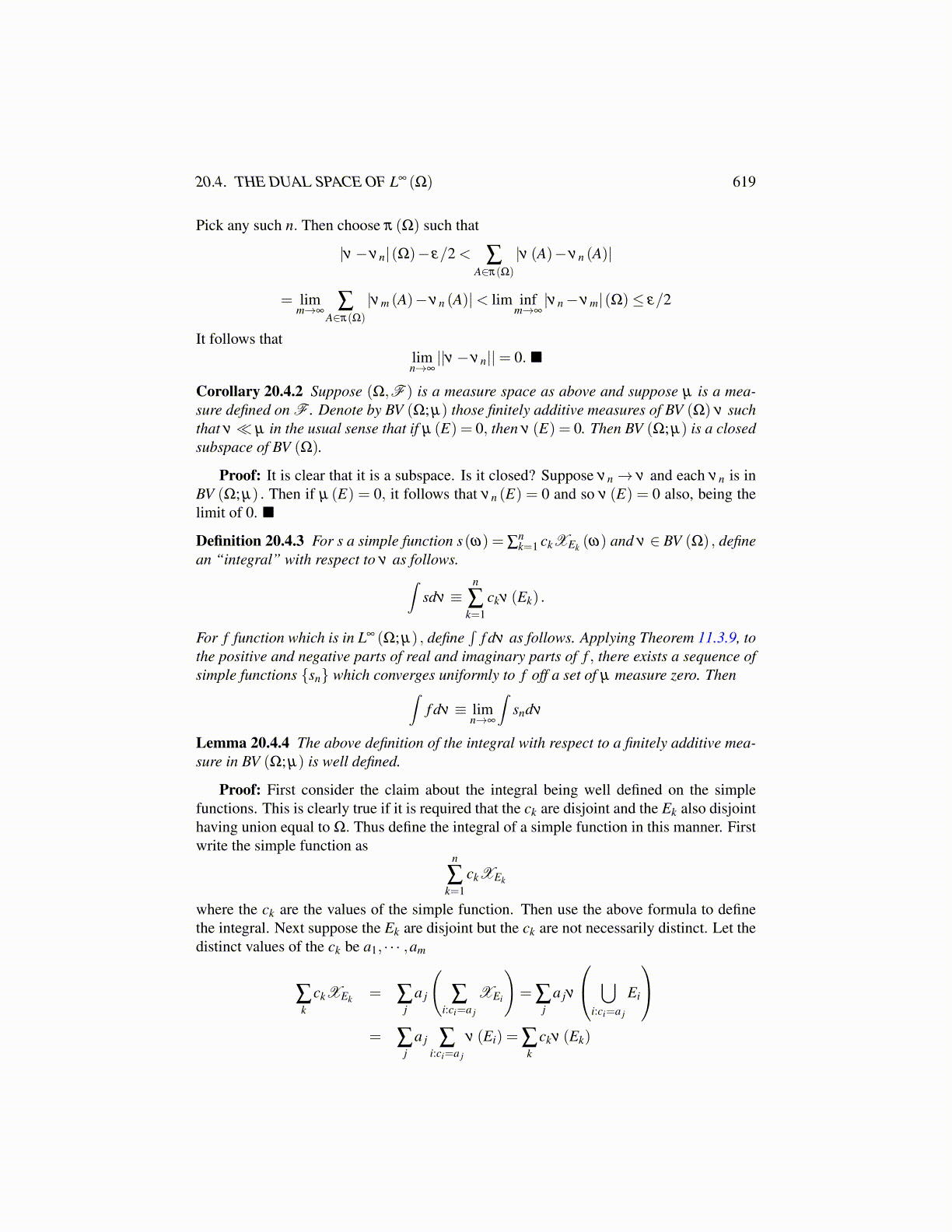
20.4. THE DUAL SPACE OF L∞ (Ω) 619
Pick any such n. Then choose π (Ω) such that
|ν−νn|(Ω)− ε/2 < ∑A∈π(Ω)
|ν (A)−νn (A)|
= limm→∞
∑A∈π(Ω)
|νm (A)−νn (A)|< lim infm→∞|νn−νm|(Ω)≤ ε/2
It follows thatlimn→∞||ν−νn||= 0.
Corollary 20.4.2 Suppose (Ω,F ) is a measure space as above and suppose µ is a mea-sure defined on F . Denote by BV (Ω; µ) those finitely additive measures of BV (Ω) ν suchthat ν≪ µ in the usual sense that if µ (E) = 0, then ν (E) = 0. Then BV (Ω; µ) is a closedsubspace of BV (Ω).
Proof: It is clear that it is a subspace. Is it closed? Suppose νn→ ν and each νn is inBV (Ω; µ) . Then if µ (E) = 0, it follows that νn (E) = 0 and so ν (E) = 0 also, being thelimit of 0.
Definition 20.4.3 For s a simple function s(ω) = ∑nk=1 ckXEk (ω) and ν ∈ BV (Ω) , define
an “integral” with respect to ν as follows.∫sdν ≡
n
∑k=1
ckν (Ek) .
For f function which is in L∞ (Ω; µ) , define∫
f dν as follows. Applying Theorem 11.3.9, tothe positive and negative parts of real and imaginary parts of f , there exists a sequence ofsimple functions {sn} which converges uniformly to f off a set of µ measure zero. Then∫
f dν ≡ limn→∞
∫sndν
Lemma 20.4.4 The above definition of the integral with respect to a finitely additive mea-sure in BV (Ω; µ) is well defined.
Proof: First consider the claim about the integral being well defined on the simplefunctions. This is clearly true if it is required that the ck are disjoint and the Ek also disjointhaving union equal to Ω. Thus define the integral of a simple function in this manner. Firstwrite the simple function as
n
∑k=1
ckXEk
where the ck are the values of the simple function. Then use the above formula to definethe integral. Next suppose the Ek are disjoint but the ck are not necessarily distinct. Let thedistinct values of the ck be a1, · · · ,am
∑k
ckXEk = ∑j
a j
(∑
i:ci=a j
XEi
)= ∑
ja jν
⋃i:ci=a j
Ei
= ∑
ja j ∑
i:ci=a j
ν (Ei) = ∑k
ckν (Ek)